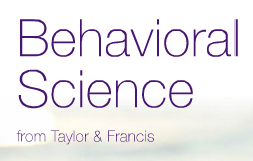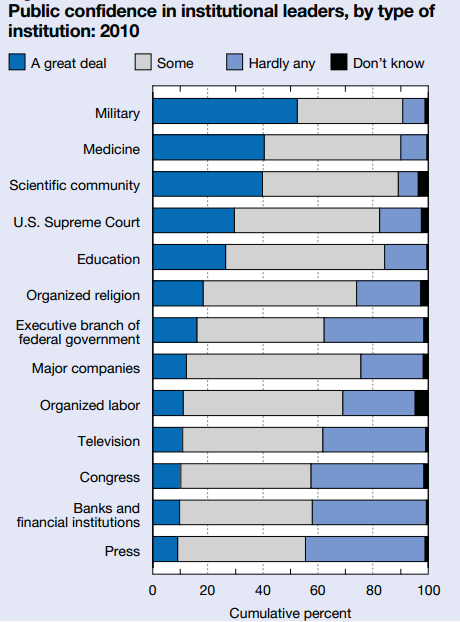August 13th, 2012
 Everyday you decide many times that you need to remember to do something in the future. You might want to remember to buy flowers for your wife on the way home from work or take the trash out after dinner. At work you might be in a meeting and decide you need to call another client or update a file after the meeting. The process of deciding to remember something in the future and then remembering it or not is called prospective memory.
Everyday you decide many times that you need to remember to do something in the future. You might want to remember to buy flowers for your wife on the way home from work or take the trash out after dinner. At work you might be in a meeting and decide you need to call another client or update a file after the meeting. The process of deciding to remember something in the future and then remembering it or not is called prospective memory.
Lapses in prospective memory are frequent even in young adults. We get busy and forget to remember. Fortunately, most lapses don’t do much damage. Some however, as with a surgeon or airline pilot, can be very serious. So I am always on the lookout for scientific studies that have practical insights into how to avoid prospective memory lapses.
For example, new research by NASA reviews the literature on prospective memory and offers a good list of suggestions for how to avoid lapses. The key method includes using a checklist and being very specific about when and where you must remember something (implementation intentions). The impact can be dramatic:
“Dismukes points out that having this kind of concrete plan has been shown to improve prospective memory performance by as much as two to four times in tasks such as exercising, medication adherence, breast self-examination, and homework completion.”
Other ideas include using reminder systems (phone/calendar reminders or another person), do important tasks now (avoid need for prospective memory if it is really important), do not multitask or allow for interruptions, link task to a well established habit and create reminder cues that are hard to avoid (note on your mirror).
While we have covered these suggestion in other Cognitive Design posts it is good to see them collected together. You can access the full article here (need to pay) or read a related (free) article from the same researcher, Remembrance of Things Future: Prospective Memory in Laboratory, Workplace and Everyday Settings.

Posted in Memory | 2 Comments »
August 10th, 2012
 The Francis & Taylor publishing group offers many books and journals relevant to cognitive design. Checkout their new digital catalog that provides easy access to their behavioral science journals including access to 100 free articles.
The Francis & Taylor publishing group offers many books and journals relevant to cognitive design. Checkout their new digital catalog that provides easy access to their behavioral science journals including access to 100 free articles.
Interested in taking a cognitive design oriented class from a world class university and instructor? How about doing it online and for free? Check out these options from Coursera:
and more.
I am interested to hear from readers about other free (and top quality) resources for learning about cognitive design.

Posted in Books, Events | No Comments »
August 6th, 2012
 Over 75% of the healthcare spending in the US goes to chronic conditions. One reason for the high cost is that they are not managed well. Recent studies show the ability to keep chronic disease in check is very difficult when patients have multiple conditions.
Over 75% of the healthcare spending in the US goes to chronic conditions. One reason for the high cost is that they are not managed well. Recent studies show the ability to keep chronic disease in check is very difficult when patients have multiple conditions.
Keeping chronic conditions in check, and better avoiding them in the first place, requires a range of patient behaviors and choices. This point is dramatically illustrated in Living Not with One, But Six Chronic Conditions:
“It’s estimated that 80% of heart disease and stroke, 80% of type 2 diabetes, and 40% of cancers could be eliminated if Americans were able to do three things: stop smoking, eat a healthy diet, and get regular exercise. These same behaviors may also prevent exacerbations of existing chronic conditions.”
Fortunately, we don’t lack the science needed to manage these diseases well. What we do lack are programs that deliver the required evidence-based care in a cost effective and psychologically compelling way. We need programs that deliver a think-and-feel experience with enough power to shift smoking, eating and activity behaviors as well as support learning new condition specific self-care routines. Such programs must be based on understanding and meeting the cognitive needs of patients as they manage limited self-regulatory capacity and struggle to learn from experience which routines will fit-and-stick-with their personal circumstances.
In short we need a cognitive design initiative focused on managing multiple chronic conditions.
And the audience for such an effort is fairly well defined. One report emphasizes how concentrated healthcare costs are. The sickest 5% of citizens account for nearly 50% of all healthcare costs. More dramatically, just 1% (3-4 million people) account for 22% of the cost! Most suffer from multiple chronic conditions.
I am interested to hear from readers that have insights into deeply-felt and unmet psychological needs (cognitive, affective, motivational, volitional) of patients that are failing to manage multiple chronic conditions.

Posted in Behavior Change, Design, Service Innovation | 3 Comments »
July 30th, 2012
 Awe is a unique psychological state brought on by an emotional response to something we find profound or worthy of reverence. Awe can be positive or negative. A great deed, stunning jewel, massive thunderhead, atomic blast or spiritual moment can invoke awe.
Awe is a unique psychological state brought on by an emotional response to something we find profound or worthy of reverence. Awe can be positive or negative. A great deed, stunning jewel, massive thunderhead, atomic blast or spiritual moment can invoke awe.
New research claims that some of the psychological effects of awe come from it ability to alter our perception of time by slowing it down:
“Across three different experiments, they found that jaw-dropping moments made participants feel like they had more time available and made them more patient, less materialistic, and more willing to volunteer time to help others.”
This is akin to being more mindful or living in the present moment rather than reflecting on the past or anticipating the future. As the researchers point out in the early draft of their paper, “awe offsets our feeling that time is limited.”
Nature is replete with awe inspiring objects and events while there are few in the designed world (e.g. shuttle launch, cathedrals and art). Interested to hear from readers that have examples of human designed artifacts that inspire awe. What makes them work?
Source of Photo: National Geographic

Posted in Examples | No Comments »
July 13th, 2012
 Nearly 40 million people in the US suffer from intractable and chronic pain at a cost of approximately $600 billion (yes billion) a year. Chronic pain is intractable when the injury is not enough to account for the continued pain. There is something else at work – a brain state or psychological process. But what?
Nearly 40 million people in the US suffer from intractable and chronic pain at a cost of approximately $600 billion (yes billion) a year. Chronic pain is intractable when the injury is not enough to account for the continued pain. There is something else at work – a brain state or psychological process. But what?
Researchers at Northwestern University might have an answer. After 10 years of work they now have compelling evidence that
… chronic pain develops the more two sections of the brain — related to emotional and motivational behavior — talk to each other. The more they communicate, the greater the chance a patient will develop chronic pain.
This means that if two people develop a similar injury, say a back injury, the person with higher levels of activity between two brain regions (frontal cortex and the nucleus accumbens) will be more apt to develop chronic pain. They also found:
“The more emotionally the brain reacts to the initial injury, the more likely the pain will persist after the injury has healed”
Both these findings are important for cognitive designers working on chronic pain applications. A brain/psychological state versus an injury is a proximate cause in longer-term chronic pain. This means improvement is possible through psychological design and therapy versus just clinical medicine. Ideally, the brain will be able to unlearn the pain.

Posted in Psychographics, Service Innovation | No Comments »
July 10th, 2012
 When selecting among alternatives, the order in which the choices are presented and the speed at which the decision is made, strongly shape the outcome.
When selecting among alternatives, the order in which the choices are presented and the speed at which the decision is made, strongly shape the outcome.
While this is likely old news to readers of the Cognitive Design Blog, researchers at the Haas School of Business sum it up nicely:
“The study found that especially in circumstances under which decisions must be made quickly or without much deliberation, preferences are unconsciously and immediately guided to those options presented first”
This primacy effect may be rooted in evolution and it has implications for cognitive designers. In a fast-decision environment you can change the order of choices to nudge decision-makers in a specific direction. On the other hand, if a specific choice is not preferred, i.e. making a choice among the alternatives needs to be considered, you need to add safeguards to the process to mitigate the primacy bias.

Posted in Cognitive Bias | No Comments »
July 6th, 2012
 We naturally seek out products, services, relationships and interactions that give us net mental energy. We want a psychological uptick that comes from a sense of inclusion, an emotional high, intellectual stimulation, an improved sense of control or a host of other positive mental states. On the other hand, we veer away from things that present complexity, force reflection on difficult emotional matters or otherwise entail cognitive load and threaten to consume more mental energy than they generate.
We naturally seek out products, services, relationships and interactions that give us net mental energy. We want a psychological uptick that comes from a sense of inclusion, an emotional high, intellectual stimulation, an improved sense of control or a host of other positive mental states. On the other hand, we veer away from things that present complexity, force reflection on difficult emotional matters or otherwise entail cognitive load and threaten to consume more mental energy than they generate.
Craving positive mental energy and avoiding cognitive load is as fundamental as seeking pleasure and avoiding pain but is far more comprehensive.
 A recent study of math-heavy scientific articles show that even scientists are doing it. The study found that articles that contained multiple equations were cited 50% less often than articles containing few or no equations. Point is equations carry a heavy cognitive load. And this is not without implications:
A recent study of math-heavy scientific articles show that even scientists are doing it. The study found that articles that contained multiple equations were cited 50% less often than articles containing few or no equations. Point is equations carry a heavy cognitive load. And this is not without implications:
“If new theories are presented in a way that is off-putting to other scientists, then no one will perform the crucial experiments needed to test those theories,”
Communications designed for how minds work carry high knowledge content with low cognitive load. In principle that is what mathematical symbols do but that assumes a fluency in the syntax that journal readers might not have. The journal articles that were part of the study came from ecology and evolution, disciplines that are not as math-heavy as other scientific domains such as physics and chemistry.

Posted in Design, Related Fields | No Comments »
July 4th, 2012
Four recent experiments suggest:
“People often face outcomes of important events that are beyond their personal control, such as waiting for an acceptance letter, job offer, or medical test results. We suggest that when wanting and uncertainty are high and personal control is lacking, people may be more likely to help others, as if they can encourage fate’s favor by doing good deeds proactively.”
 We naturally do good rather than act selfishly when we want something important that is outside of our control. The idea is that by doing good we are more deserving of a favorable outcome and the fates will smile on us.
We naturally do good rather than act selfishly when we want something important that is outside of our control. The idea is that by doing good we are more deserving of a favorable outcome and the fates will smile on us.
The are many implications for cognitive design. For example, presenting options to invest in Karma (do good) when people are in this mental state could be an effective way of managing individual anxiety and creating social value at the same time.

Posted in Psychographics | 1 Comment »
July 1st, 2012
Artifacts are what designers and innovators create. How you think about them determines how creative you will be.
 Artifacts are those abstractions, objects and activities that are designed for a specific purpose. They are the stuff and events created by people rather than nature. In general terms artifacts are a collection of four levels of overlapping features and functions with a distinct form that have been designed to:
Artifacts are those abstractions, objects and activities that are designed for a specific purpose. They are the stuff and events created by people rather than nature. In general terms artifacts are a collection of four levels of overlapping features and functions with a distinct form that have been designed to:
- Be useful or deliver the core functionality of the artifact (level 1)
- Be easy to access or give the artifact usability (level 2)
- Delight senses or give the artifact a look-and-feel (level 3)
- Move hearts/minds or give the artifact a think-and-feel (level 4)
Take the radio for example. It is useful because it has been engineered to play music. Playing music, news and other audio broadcasts is the radio’s core function. Most modern radios have digital displays, scan features and memory buttons that make them very easy to use. These features give radios usability. Some radios are almost a work of art in the way they stimulate our visual and tactile senses with a sleek high-tech form, diode illuminated displays and grip-right buttons. Whereas other radios are plain in appearance and sensory experience and deemphasize features at level three.
Read the rest of this entry »

Posted in Design | 3 Comments »
 Everyday you decide many times that you need to remember to do something in the future. You might want to remember to buy flowers for your wife on the way home from work or take the trash out after dinner. At work you might be in a meeting and decide you need to call another client or update a file after the meeting. The process of deciding to remember something in the future and then remembering it or not is called prospective memory.
Everyday you decide many times that you need to remember to do something in the future. You might want to remember to buy flowers for your wife on the way home from work or take the trash out after dinner. At work you might be in a meeting and decide you need to call another client or update a file after the meeting. The process of deciding to remember something in the future and then remembering it or not is called prospective memory.








